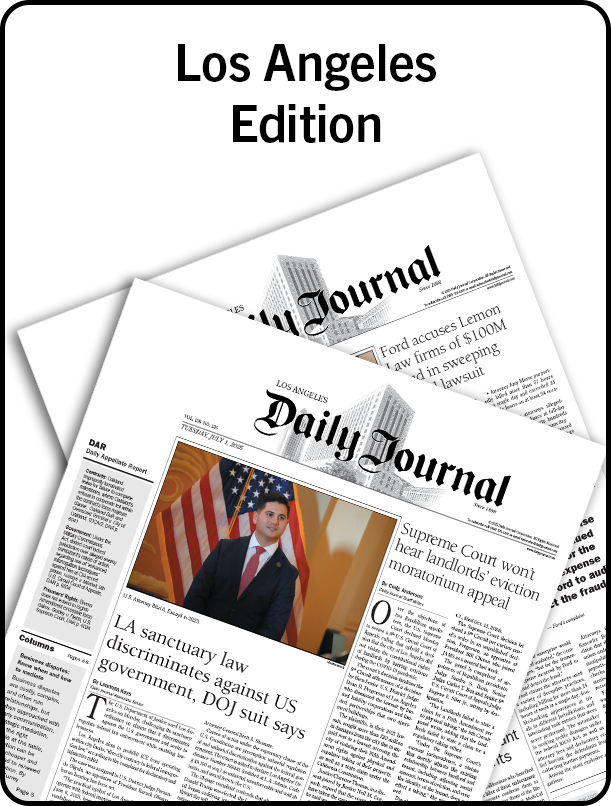Land Use,
LA Fires,
Government,
Administrative/Regulatory
Jan. 9, 2025
From ashes to action: Planning for a fire-resilient future
California's wildfires highlight the need for proactive land use planning to mitigate wildfire risks through safety elements in local General Plans and CEQA analysis, while also requiring compassionate, adaptive short-term responses to rebuild communities and address constituents' needs.




Michael Patrick Durkee
Michael Patrick Durkee practices land use, elections, and local government law in both administrative and judicial proceedings, and is the founder of the Law Office of Michael Patrick Durkee.

Wildfires throughout California are devastating entire communities, leaving residents to deal with the daunting physical and emotional complications that such fires create: immediate safety, temporary housing, childcare, senior care, animal care, insurance claims, and rebuilding (or not), to name a few.
From a California Land Use Law perspective, two things immediately come into focus: (1) Long term local fire safety planning efforts - in advance of such wildfire conflagrations; and (2) Shorter-term local reactions/responses - after such wildfire conflagrations.
First, the zone of transition between unoccupied land and developed land is often referred to as the wildland-urban interface (WUI); WUIs are generally looked at as posing the highest risk of catastrophic wildfire. In California, long-term advance planning for potential wildfires (and other fires) is found throughout California statute, including California's Planning and Zoning law, particularly at the local (city or county) General Plan level where one of the elements required in a local general plan is the "safety" element, see, Gov. Code §§ 65302(g), 65302.5(b). A local safety element, among other things, must provide a set of goals, policies, and objectives for the protection of the community from the unreasonable risk of wildfire. Additionally, the safety element must provide feasible measures implementing those goals, policies, and objectives, such as avoiding or minimizing wildfire hazards associated with new development and land uses, locating essential public facilities (hospitals, emergency command centers, emergency shelters, etc.) outside of high fire risk areas, designing adequate infrastructure (safe access for emergency response vehicles, visible street signs, adequate water supplies (a problem currently plaguing several Southern California cities fighting fires), and working cooperatively with other public agencies with fire protection responsibility. Safety element efforts must also consider the advice included in the State Office of Planning and Research's publication, "Fire Hazard Planning, General Plan Technical Advice Series," and must address vulnerabilities that climate changes pose. Likewise, the draft safety element must be submitted to the State Board of Forestry and Fire Protection for comment and recommendations before the safety element is adopted, and the safety element's update is now tied to the local housing element's update so the new housing locations take into consideration fire risks.
Longer-term planning and study are also addressed by the California Environmental Quality Act (CEQA), which now requires that local public agencies not only consider both the impact of projects on emergency response and evacuation plans, but also whether building such projects will expose people or structures to significant risk of loss, injury, or death because of wildland fires. CEQA Guidelines, Appendix G, § IX. In the case of projects located on land within very high fire hazard severity zones, the analysis is even more detailed. CEQA Guidelines, Appendix G, § XX. Finally, if it is determined that environmental effects will cause substantial adverse effects on human beings, that determination is considered a mandatory finding of significance, requiring the adoption of a statement of overriding considerations in order to approve the proposed project. Pub. Resources Code, § 21081; Cal. Code Regs., tit. 14. § 15065(a)(4).
Second, shorter-term local responses - in the aftermath of wildfires - tend to involve remediation, local code change, and emotional/empathetic reactions. Local public agency politicians must use the information gathered in the aftermath to better plan for and respond to future fires. At the same time, they must face constituents who were personally brutalized by such fires. Doing the right thing, by both the individuals and the community at large, can prove challenging. For example, when the Oakland "Firestorm of 1991" devastated the Oakland Hills, improved local equipment, improved fire hydrants, and other improvement measures were taken to increase fire-fighting abilities and in turn help to reduce future risk. However, many complain that not enough of the rebuilt homes were required to be "hardened" (generally built to reduce fire - setback areas, noncombustible materials, etc.) and not enough vegetation clearing has been performed to ensure against a future event. In Napa County, in response to the 2020 "Glass Fire," the County changed its local Code to allow rebuilding applicants who lost a structure in the Fire up to four years to submit rebuilding applications, where generally a normal rebuilding application was required to be submitted within six months of the event leading to the structure's loss. In short, in the aftermath of these fires, local public agencies try to reduce future risk, while also taking into consideration the very human needs of their impacted constituents.
No doubt these current fires will again lead to both legislative and local changes in the law.
Submit your own column for publication to Diana Bosetti
For reprint rights or to order a copy of your photo:
Email
Jeremy_Ellis@dailyjournal.com
for prices.
Direct dial: 213-229-5424
Send a letter to the editor:
Email: letters@dailyjournal.com




